
Is our Future Dependent on a Mars Colony?
Benefits of a Mars Colony | Challenges of Traveling To and Living on Mars | Current Topics Being Discussed | NASA Programs for Exploration | What Private Companies Have an Interest | What Types of Jobs Are Needed | Where Do We Go From Here?
Is the Future of Mankind Dependent on a Mars Colony?
Type Mars in a Google search and you’ll quickly see that traveling 33 million miles from Earth to the red planet, and ultimately colonizing there, is a hot topic for scientists, entrepreneurs, astronauts and anyone with an adventurous spirit.
NASA, private companies, nonprofit societies and research organizations are aggressively tackling the many facets of such an enormous undertaking. While we are many years away from being able to send humans to create a Mars colony, there is steady scientific and technological progress aimed at that ultimate goal by 2030, with numerous rovers and robots currently operating on or circling around Mars, along with dedicated research and exploration programs paving the way for human exploration.
With Silicon Valley entrepreneurs and newly formed private companies stepping up to the plate to fund engineering and set Mars exploration on the front burner, there’s no shortage of curiosity, idealism, and confidence about making travel, exploration, and survival on Mars a reality. And there's no shortage of space research in the news.
Dr. Jim Green, NASA Chief Scientist, recognizes the focus on Mars isn’t going away. “I think the generation today is the Mars generation,” he told Inverse. “When we landed Curiosity on Mars, we had the world’s attention. I immediately recognized there is a new generation in town, and it’s the Mars generation.” And recently, The Astrobiological Research and Education Society explained why going to Mars is of key important to humanity.
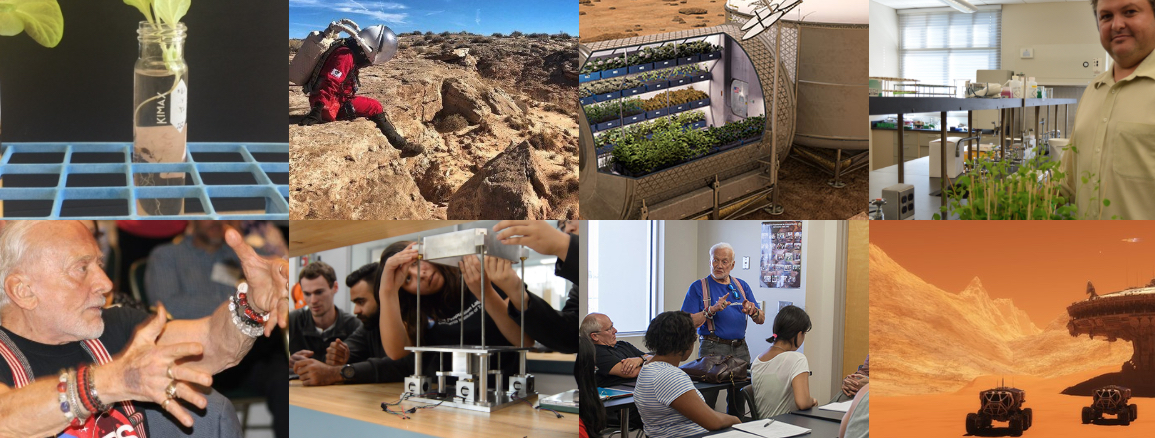
What are the Benefits of a Mars Colony?
Ask the question and there will be no shortage of responses, with many experts citing the strategic, practical and scientific reasons for a Mars colony including:
- Mars is the most accessible planet in the solar system.
- Exploring Mars may possibly answer origin and evolution of life questions.
- Mars could someday be a destination for the survival of humankind.
- There is the possibility of discovering new life that could impact life on Earth.
- Exploration such as this grows us a species and drives the development of advanced technological innovations that benefit all of mankind.
- The exploration and creation of a Mars colony demonstrates political and economic leadership for the United States, while at the same time creating a peaceful, international collaboration that eases political tensions.
- A mission of this magnitude creates government-sponsored research bases for long-term scientific advancement of deep-space exploration.
- Mars has all the raw materials required to support life including carbon, nitrogen, hydrogen, oxygen, water ice and permafrost.
Astronaut Buzz Aldrin said of Mars, “Exploring and colonizing Mars can bring us new scientific understanding of climate change, of how planet-wide processes can make a warm and wet world into a barren landscape. By exploring and understanding Mars, we may gain key insights into the past and future of our own world.”
An institute in Florida bearing Aldrin’s name is working to advance space exploration and development toward the goal of establishing and sustaining a permanent Mars colony. Workshops cover topics including the Mars environment, human physiology, psychology, crew activities and habitats, and power supply and resource utilization. There are also a host of articles from the work being done at the Aldrin Institute.

What Challenges Does Traveling To and Living On Mars Present?
While there’s an abundance of articles and research touting the scientific, technological and sociological case for a Mars colony, the reality of making it happen comes with an enormous cost in people, equipment, facilities, research and development.
While cost, radiation, health and safety are some of the largest challenges to making a mars colony a reality, students are involved in research from soil and crop sustainability to robots and Spaceflight Associated Neuro-ocular Syndrome. See some examples in these videos.
COSTS
In December of 2017, President Trump signed Space Policy Directive 1 to organize government, commercial and international partners towards returning humans on the Moon. The Directive lays the foundation for human exploration to Mars but without making a commitment to the funding for the exploration and colonization, estimated by NASA at the time to be $50 - $150 billion across 10 years. More recently, Spacenews.com reported the cost to be more like $2 Trillion.
Plus, sustaining that type of budget long term seems unrealistic on the heels of William Gernstenmaier, head of NASA’s program on human exploration of space, announcing NASA wants to remain on a “flat” budget.
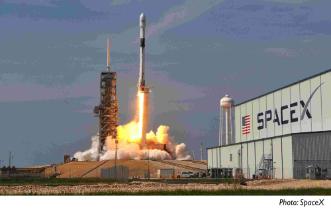 As scientists simulate Mars missions in the dusty desert of Saudi Arabia, plan to build a large Mars test settlement in Dubai, and companies build rockets in hopes they eventually are the vehicles to take man to Mars, others, like University of University of , feel that the interest in a Mars colony is really more about a the driving desire to explore the universe, not to save the Earth.
As scientists simulate Mars missions in the dusty desert of Saudi Arabia, plan to build a large Mars test settlement in Dubai, and companies build rockets in hopes they eventually are the vehicles to take man to Mars, others, like University of University of , feel that the interest in a Mars colony is really more about a the driving desire to explore the universe, not to save the Earth.
No matter what the reason, entrepreneurs like Elon Musk of SpaceX, are demonstrating the viability of venturing beyond low-Earth orbit with new technologies that make reusability a reality, ultimately cutting production and launch costs. SpaceX spent less than $2 billion to design, launch, and recover the inaugural launch of the Falcon Heavy earlier in 2018. This is a bargain in space dollars, considering that The Augustine Commission stated seven years ago it would cost in the area of $36 billion to build a heavy launch vehicle capable of taking humans to Mars.
With the collective efforts of NASA, SpaceX, Boeing, Blue Origin and a myriad of other space companies with their eyes on solving Mars enormous costs and technological challenges, heading to the red planet and building a Mars colony may become more possible.
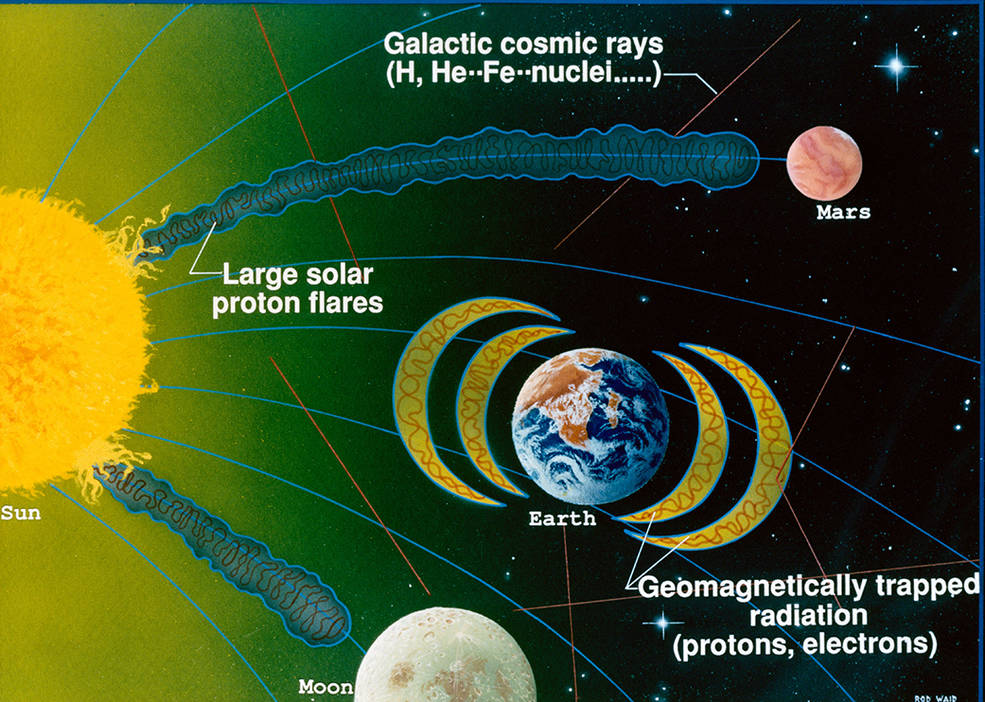
RADIATION
Radiation is the next challenge to solve for astronauts to land and live in a Mars colony. Scientists say that colonists will face radiation levels eight times higher than the current government specified limits. According to Space.com, The Mars Rover Curiosity calculated an average dose of radiation over a 180-day journey to the red planet as the equivalent of 24 CAT Scans, similar to exposing an astronaut to 15 times the radiation limit of nuclear power plant workers.
While Earth’s magnetic field and atmosphere protect us from radiation, space travel to Mars would subject astronauts to two types of radiation that are harmful to humans: protons spewed out by the sun, and cosmic rays – high-energy atomic and subatomic particles that blast from exploding stars, black holes and other sources in space.
Cancer is not the only risk facing astronauts. Deep-space radiation while living in a Mars colony will likely cause vision-impairing cataracts, blood circulation issues and nervous system damage that could impair cognitive ability. Research at the University of Las Vegas has also shown that when a cell is hit with a cosmic ray, the changed cell gives off signals to other cells that trigger cancer mutations.
Curiosity’s Radiation Assessment Detector is helping us better understand what life on Mars will be like, sparking research on such things as protective suits, habitats and extravehicular activities. Business Insider reported in 2017 that NASA has agreed to test a new polymer-based radiation-blocking vest for astronauts, called AstroRad, on its next mission around the moon.
Jim Green, the former head of NASA's planetary science division, has proposed building an artificial magnetic shield for Mars to protect a hypothetical nascent atmosphere from the sun's proton radiation, which might otherwise blow the air into space. There are indeed many theories and a tremendous amount of research aimed at solving the challenges radiation brings for both deep space travel and building a Mars colony. Jim Green stated that “If this can be achieved in a lifetime, the colonization of Mars would not be far away."
HEALTH & SAFETY
Heading to Mars brings with it other health and safety risks for the long journey that NASA and other space agencies must solve.
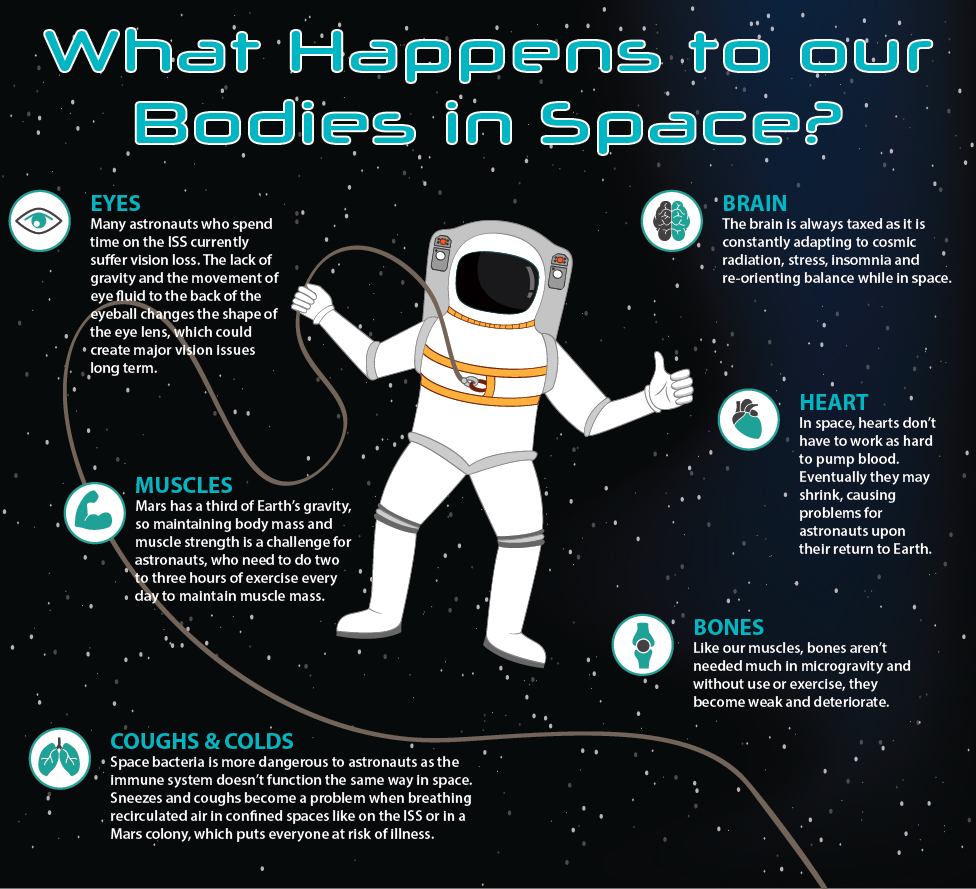
- Space Sickness: The tiny gyroscopes in our brain that give us spatial awareness are upset when living in Zero gravity and as a result, astronauts suffer a lot of nausea. Many astronauts face tough bouts of space sickness, and an extended mission would likely pose issues with space sickness.
- Mental Health: From the inherent danger of space travel, reliance on life-saving machinery, radiation exposure, space weather (sun bursts and meteorites), living in cramped quarters and an unchanging habitat of blackness, maintaining good mental health and emotions in extreme environments is still an unknown. Researchers are looking at ideas such as virtual reality, meditation, and pictures of nature to combat emotional challenges that could surface when living in a Mars colony.
- Muscular Breakdown: Mars has just a third of Earth’s gravity, so maintaining body mass and muscle strength is a challenge for astronauts, who need to do two to three hours of exercise every day to maintain muscle mass and cardiovascular fitness.
- Eye Problems: Lack of gravity and the movement of eye fluid to the back of the eyeball changes the shape of the eye lens. Most astronauts spending time on the ISS end up wearing glasses in space, and when they come home, experience permanent changes to their vision.
- Coughs and Colds: The human immune system doesn’t function the same in way in space and history has shown that space bacteria are more dangerous. When living in small confined spaces like on the ISS or in a Mars colony, breathing recirculated air, any sneeze or cough infects everyone. Should anything develop into a more serious illness, there isn’t a hospital down the street, either.
- Emergencies: A rescue from the ISS could be done in a day, but people living in a Mars colony will face an eight-month journey for advanced medical treatment, so they must be prepared to handle emergencies on their own. Conditions would be simulated on Earth and information on a 20-minute time delay would be the most astronauts could hope for. Even on-site emergencies such as surviving Mars’ notorious planet-scaled dust storms need to be understood in order to forecast emergency procedures.
What are the Current Topics Being Discussed About Mars?
Robotic explorers have studied Mars for more than 40 years, giving scientists and researchers a peek into its habitat and viability for man to land and live there. NASA’s vision for getting to the red planet begins in low-Earth orbit aboard the International Space Station, where astronauts are consistently working to determine the technologies and communications systems needed for deep space exploration.
There is also a community of scientists and space experts who believe we shouldn’t embark on this effort and build a Mars colony, citing the immense cost, high-risk travel, health concerns and the unwelcome and dangerous habitat to overcome once we are there, not to mention long-term maintenance and emergency challenges.
The engineering, analysis, and the unanswered questions seem endless for such a journey right now. But the many research programs and explorative initiatives currently underway seek to provide the answers and identify how mankind can successfully embark on this endeavor.
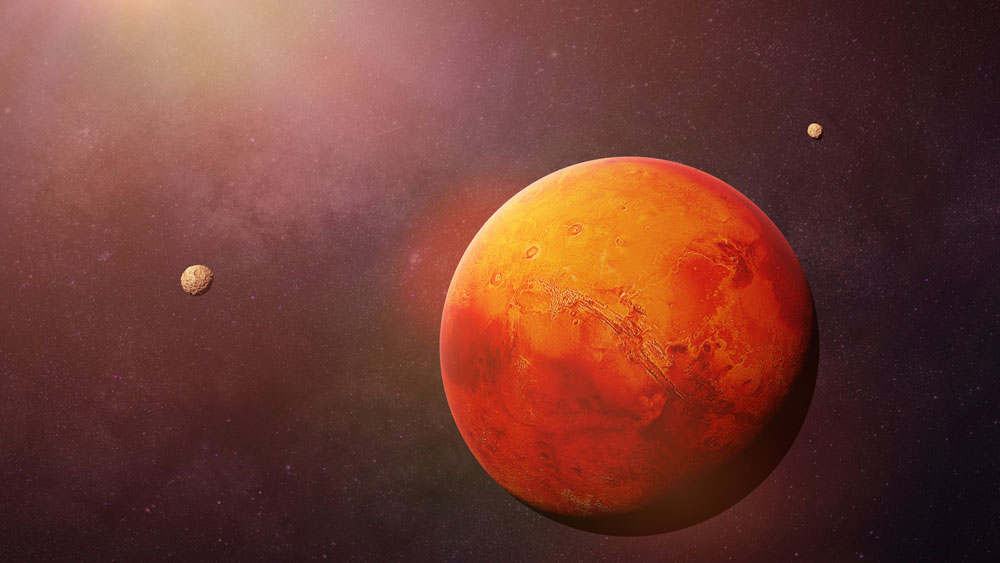
What are the NASA Programs for Exploration of Mars?
-
ExoMars – The European Space Agency’s Exobiology on Mars program is a series of missions designed to understand if life ever existed on Mars. NASA's participation in the 2020 ExoMars Rover mission includes providing the astrobiology instrument on the rover, the Mars Organic Molecule Analyzer (MOMA), which they hope will answer questions about whether life ever existed on Mars.
-
MAVEN – The Mars Atmosphere and Volatile EvolutioN (MAVEN) mission launched in 2013 is part of NASA’s Mars Scout program to explore Mars’ upper atmosphere, ionosphere and its interactions with the sun and solar wind. In the five years of its operation, MAVEN is one of six active probes orbiting Mars to determine the planets habitability, collecting data on such topics as the composition of high-energy ions in the atmosphere, solar wind temperature, density and velocity, how the upper atmosphere changes, and the chemical makeup of Mars’ atmosphere.
-
Odyssey – Launched in 2001, Odyssey is NASA’s longest-running spacecraft on Mars. It studies the planets radiation environment, and maps the amount and distribution of chemical elements and minerals that make up the Martian surface, ultimately locating vast amounts of water ice in the polar regions.
-
Reconnaissance Orbiter – The Mars Reconnaissance Orbiter (MRO) has already worked more than double its planned mission life since it launched in 2005. NASA plans to keep MRO on the job well past 2025, finding new ways to support other missions and rely on activities like tracking stars and making use of its batteries. Lead scientist of NASA's Mars Exploration Program Michael Meyer says, "It's not just the communications relay that MRO provides, as important as that is. It's also the science-instrument observations. Those help us understand potential landing sites before they are visited, and interpret how the findings on the surface relate to the planet as a whole."
-
Opportunity Rover – Opportunity was designed for a 90-day mission when it launched in 2003, and 15 years later it is still wandering the surface of Mars on a mission to investigate soil and rock samples, study craters, take photos and analyze the Heat Shield Rock meteorite. The rover has provided a wealth of information about operating on Mars, and is periodically in the middle of a Mars dust storm.
-
Curiosity Rover – Landing on Mars in 2012, the Curiosity Rover has utilized drills, lasers and imaging instruments to find out if Mars is suitable for life. The rover has spent 2,000 sols (days) on Mars, traveling from Gale Crater to Mount Sharp, studying geological information and amassing many discoveries, such as evidence of past water, geological changes, identification of organic molecules, and seasonal changes in methane concentrations in the atmosphere (which could mean that gas is produced from living organisms).
Future Plans
NASA is also building the Mars2020 rover, that will continue geological sample analysis and conduct an experiment to produce oxygen from the Martian atmosphere – the first time that support for human exploration will be created from resources from another planet.
InSight (Interior Exploration using Seismic Investigations, Geodesy and Heat Transport) launched in May of 2018 and is on its way to Mars. The first interplanetary mission to launch from Vandenberg, CA., InSight’s mission is to look deep beneath the Martian surface and the study the planet’s interior, measuring its heat output, listening for “marsquakes” and to develop a map of the planet’s deep interior. Also on board was Mars Cube One, NASA’s technology experiment in which two “CubeSats” will test new communications and navigation capabilities for future missions.
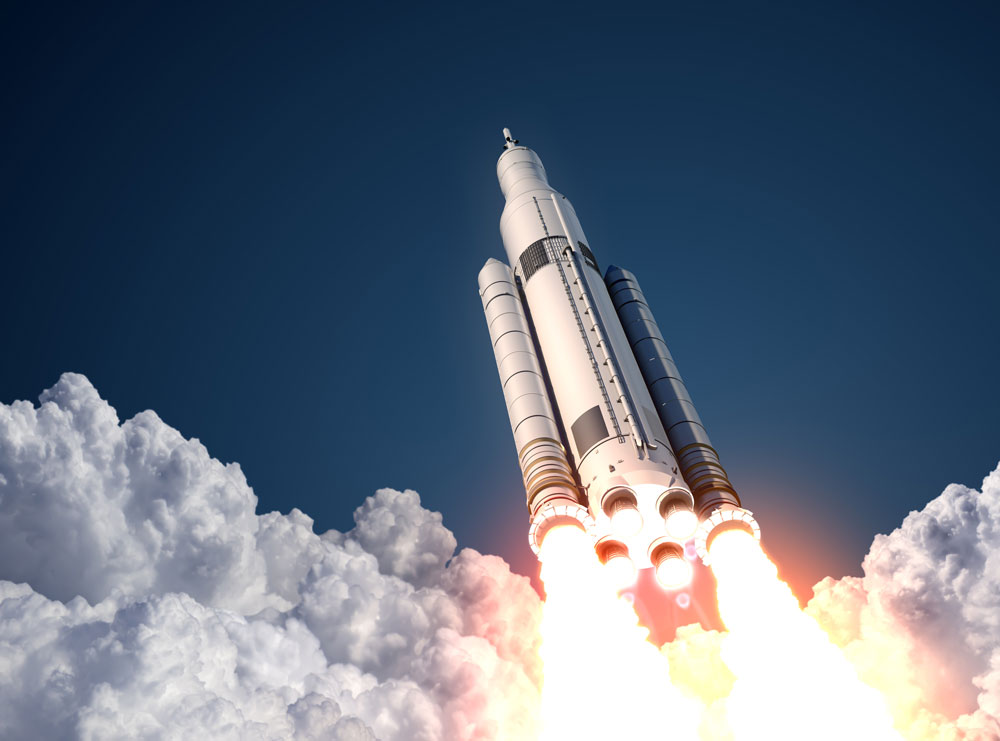
What Private Companies Have an Interest in Mars?
SpaceX
CEO Elon Musk set an aspirational goal to send a cargo mission to Mars in 2022. Many in the industry feel a mission will happen later, closer to 2030, but SpaceX marches forward, revealing a new vehicle design in 2017 that they claim makes getting to Mars more affordable. Musk is also looking for these initial missions to initiate the beginning of a Mars colony. The launch of the Falcon Heavy in February 2018 was the latest technological achievement for SpaceX, launching the most powerful rocket (and the return of its three boosters) since the Saturn V took astronauts to the Moon. The space industry establishment that was once wary of tech billionaires like Musk, or Blue Origin’s Jeff Bezos, now respect the vision these entrepreneurs bring to the mission of space exploration.
Boeing
Boeing CEO Dennis Muilenburg believes the mega rocket Boeing is building for NASA will take astronauts to Mars before SpaceX. As contractor for NASA’s giant Space Launch System, designed to launch astronauts on deep-space missions using the new Orion spacecraft, Boeing plans to begin test flights in 2019 and manned flight would come as soon as 2024. Boeing is positioned well to fund research and development and is already entrenched with NASA, who according to the New York Times, will receive a $370 million increase in funding from the U.S. Government in 2019.
Lockheed Martin
Mars Base Camp is Lockheed Martin’s vision for sending humans to Mars. The concept is based on creating a Mars-orbiting habitat and science laboratory to perform real-time scientific exploration, analyze Martian rock and soil samples, and confirm the ideal place to land humans on the surface in the 2030s to begin a Mars colony. Following a first orbiting mission, a reusable, single-stage surface lander would descend to the surface of Mars and could last up to two weeks (with up to four astronauts), and return to the orbiting Mars Base Camp to refuel for another mission.
Blue Origin
Jeff Bezos, Amazon founder and Blue Origin CEO, is taking aim at Mars, the moon and other deep-space destinations. Blue Origin has created its identity as a rocket manufacturer, focusing on rocket-powered vertical takeoff and vertical landing vehicles for access to suborbital and orbital space. The company’s long-term vision is to have millions of people living and working in space, with engines designed for reuse. Recently he told GeekWire that he wants to work with NASA and ESA to create a permanent settlement on the Moon.
United Launch Alliance (ULA)
With 100 percent launch success in 128 national security, civil and commercial space missions, ULA’s expertise in interplanetary missions is unparalleled, successfully launching every United States mission to the Red Planet since the 1960s, with Atlas V and Delta rockets launching missions to each of the planets in our solar system. ULA will play a key role in NASA’s Mars 2020 robotic science rover mission as the transportation service for commercial activities, so that NASA can focus on pressing forward into deep space. ULA will support the Space Launch System that will bring the manned Orion capsule to the red plant and other deep space destinations.

What Type of Jobs Are Needed for a Mars Colony?
With the growing activity around the world in space science and space exploration, as well as the mission to create a Mars colony, jobs in the space industry are growing. Career options for the future space scientist are widely diversified and cover nearly every scientific discipline. According to Aerospace company Lockheed Martin, there are five key career areas where jobs are plentiful:
- CYBER ARCHITECT: Shielding systems from cyberattacks is a top priority. Architects will also develop innovative solutions, research vulnerabilities and reverse engineer illicit software. A huge bonus is the job security in cybersecurity, with unemployment in this industry reported by Cybersecurity Ventures to be zero!
- TEST TECHNICIAN: With so many “never done before” aspects to deep-space travel, careers in all aspects of testing and analysis to validate systems are plentiful. Experience with electronics assembly, test instrumentation and data acquisition put you in the most competition position.
- SOFTWARE DEVELOPER: Software development is part of nearly everything we use today, with jobs in nearly every industry growing. The need in the space industry is no different and according to Code.org, an estimated one million more computing jobs that applicants will fill them by 2020. Computer science, systems engineering, electrical engineering, physics and math can position you for a software developer career.
- RADIO FREQUENCY ENGINEER: Radio frequency signals are the sole means of communication between a spacecraft in orbit and mission control, so this position is a critical one. In this career, individuals design, construct and maintain wireless communication equipment. A background in general electronics, physics, and math prepares you for this position.
- MANUFACTURING ENGINEER: This broad career path could have designing production processes, transporting mission critical hardware, and overseeing product quality. It’s the perfect career for people who have a strong background in mechanical manufacturing or aerospace engineering who enjoy doing a variety of job functions.
But these are not the only jobs to find in the space industry or as part of program focused on a Mars colony. There are a host of skills needed in all areas of the industry including:
- Administration: project and program managers on all levels
- Architecture: housing, research facilities and other structures
- Agriculture/Botanists: food and farming
- Analysts
- Avionics
- Energy/Power/Fuel Engineers
- Engineering of all kinds: mechanical, chemical, electrical, computer, aerospace, biomedical, civil, structural, robotics, sustainability, industrial, systems and infrastructure.
- Launch Operations
- Lawyers and accountants
- Manufacturing and Construction
- Medical
- Research
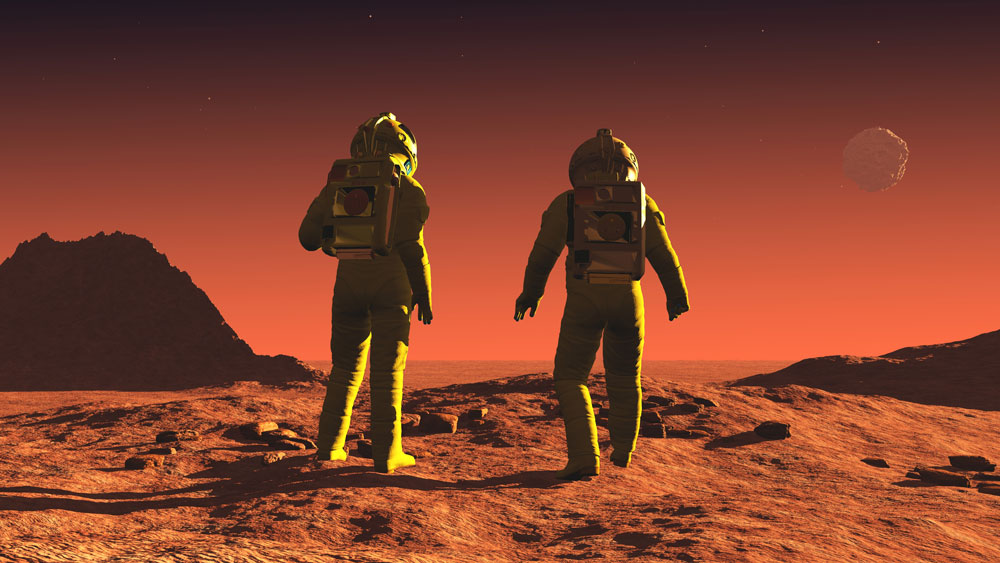
Where Do We Go From Here?
When Americans landed on the Moon more than 50 years ago, leaders at NASA set their sights on Mars as the next destination in our solar system. Now that seemingly unattainable mission is challenging any and all who want to get involved to make it happen – and there’s no lack of motivation that it can be done in the next 20 years.
One thing that’s different on the quest to explore and build a Mars colony versus the first quest of mankind to venture to the Moon: Robotic and human exploration of Mars is shaping up to be a collaborative venture of people and resources from around the world (in government and private industry) rather than a NASA-dominated endeavor. In fact, The Mars Society, established in 1998, has now become the world's largest and most influential space advocacy organization dedicated to the human exploration and settlement of the planet Mars, with more than 6,000 members from 50 countries around the world.
The industry as a whole feel the challenges are solvable. The risks a worthy cause. For NASA and its international partners, the journey to explore and build a Mars colony is the next historic pioneering endeavor for mankind to complete.
Mars Research
- Mars in the News
- Mars Report from NASA’s JPL
- Career Options for the Future Space Scientist
Organizations
Sources:
- Business Insider
- Curiosity Rover
- EarthSky.org
- Futurism
- Lockheed Martin Mars Base Camp
- Mars 2020
- Nasa Mars Exploration Program
- NASA Reconnaissance
- National Geographic
- National Space Society\


 Give to Florida Tech
Give to Florida Tech 